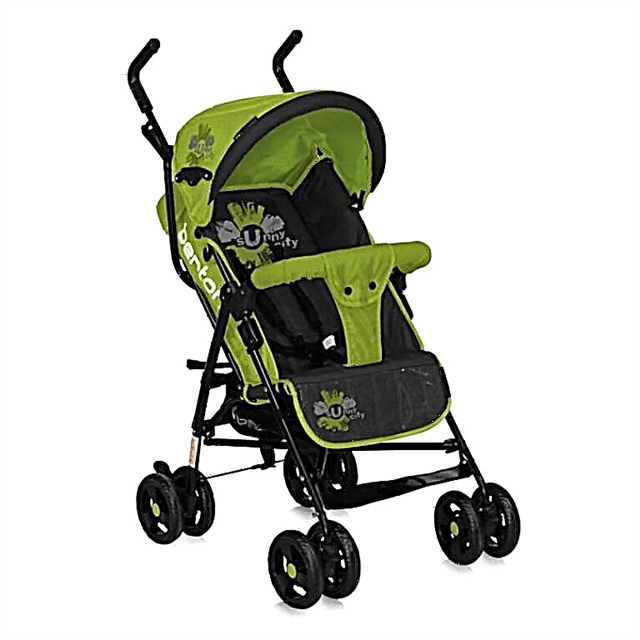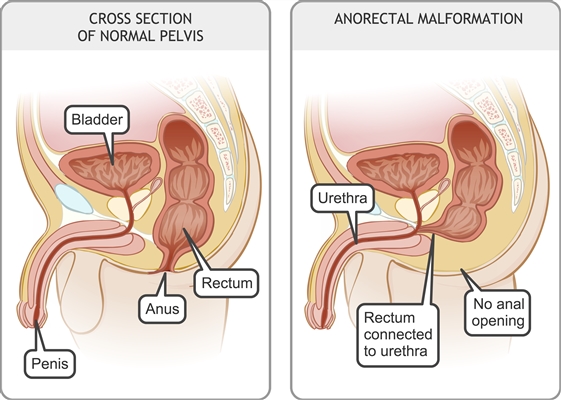
If the due date, determined as the estimated one, has long passed, and childbirth does not occur, then after 41 weeks of pregnancy, the question is usually posed by the edge. After all, a post-term pregnancy is undesirable for either the mother or the baby. How is childbirth going on at 41-42 obstetric weeks, whether they have any distinctive features, in which cases stimulation of labor is allowed - we will talk about this in this material.

Doctors' opinion on the term
In the understanding of most ordinary people, 40 weeks is the deadline for gestation. If childbirth does not occur during this period, women begin to worry. Their anxiety is fueled by relatives, girlfriends, the Internet, who frighten the pregnant woman with the consequences of a post-term pregnancy. In fact, there is nothing wrong with 41-42 weeks of pregnancy. Postterm, according to medical standards in Russia, is considered pregnancy from 42 full obstetric weeks.
Most often, primiparous babies are worn out before this time, since their birth canal and uterus are less elastic, and the body prepares for childbirth longer. Often large children with a solid weight linger in the mother's womb. The reason for the delay in labor can also be an incorrectly defined period of pregnancy (more often this happens in women with an irregular menstrual cycle and in those whose cycle usually lasts more than 32 days). A woman's low mobility, reduced physical activity, psychologically depressed mood and stress, fear of childbirth also do not contribute to the onset of labor.
Statistics say that up to 6% of babies are born at 41-42 weeks, and this is a solid figure. If the 41st week has passed and the 42nd has begun, the main thing is to remain calm. In most cases, during this period, the woman will be advised to go to the hospital in order to make further decisions with the doctors.

Childbirth may begin at any time, or it may not start, and then, after a preliminary examination at the hospital, it will be decided what to do next: continue to expect or stimulate labor.
How does the child feel?
At 42 weeks gestation, the baby is considered fully term. The prolonged pregnancy of the mother has not yet harmed his condition, although the placenta has already become considerably thinner and is coping with its responsibilities for nutrition and gas exchange all the worse. Nevertheless, a pregnant woman may not worry - compensatory mechanisms are working in the body of the crumbs, and he gets everything he needs.
The aging of the placenta has its own big plus: it becomes a bad barrier, and the baby begins to receive more and more antibodies from the mother's blood to various pathogens. Therefore, according to pediatricians, children who are born after 40 weeks of pregnancy usually have stronger immunity compared to their peers.
At 41-42 weeks, the baby moves very little. It is cramped for him, he occupies the entire uterine cavity, the amount of water has decreased to a minimum threshold. The weight of children at this time can be different - from 3.5 to 4.5 kilograms and even more.
Growth exceeds 53 centimeters. All organs and systems of the child's body work like a clock. The baby is asleep and awake, but usually sleeps more often this week. It also saves energy in anticipation of childbirth.

The babies look very attractive at this time: they are plump, cute, the skin has a delicate pink color. Due to the fact that the baby decided to stay, he has accumulated enough subcutaneous fatty tissue, enough surfactant has formed in his lungs to breathe on his own after birth. All this minimizes the risks for him in the early neonatal period. The child meets all the signs of full-term.
The downside is that it is still growing and gaining mass. This can make the birth process more difficult, especially if the head diameter was already rather big. In 95% of women at this time, babies are in the lower part of the uterus, pressing their head against the exit from it. This position means that the baby is ready for childbirth. If the crumb has not dropped, the reason for this may be polyhydramnios, as well as the individual characteristics of the structure of the pelvis of the expectant mother.
The baby's hair and nails are actively growing, so during childbirth at 42 weeks, babies usually delight relatives with noticeable hair and a luxurious long and rather sharp manicure.

Choice of obstetric tactics
The World Health Organization advises against encouraging labor before the full 39 weeks of pregnancy. In Russia, the Ministry of Health is more "patient", and therefore, until 42 weeks of pregnancy, active obstetric actions are justified only if there is reason to assert that the fetus suffers in utero or in the event of a deterioration in the health of the expectant mother due to an exacerbation of a chronic disease, for example.
Therefore, at 41-42 weeks, the tactics of observation and waiting are considered preferable. Daily check-ups in a hospital or every other day - in consultation, if a woman refused hospitalization, are designed to establish the pace at which the cervix is maturing. During pregnancy it is quite long and hard, tightly closed. As labor approaches, it softens and shortens to 1-1.5 centimeters. At this time, the length of the cervix is often less than a centimeter.

Active intervention is carried out if the cervix is immature or not mature enough. In this situation, at the current time, the cervix is being prepared: a pregnant woman in the hospital is prescribed hormonal preparations in the form of injections or a local gel on the cervical area.
Such therapy should accelerate the process of softening and dilating the cervix. Sometimes doctors suggest the introduction of kelp into the cervical canal. These are sticks made from dried kelp algae (simply seaweed), which swell on contact with liquids, increase in size and cause mechanical expansion of the cervix.
If at 41-42 weeks there are no signs of cervical maturation and the therapy for its preparation does not have the desired effect, a cesarean section is prescribed. For operative childbirth at this time, there may be other indications from both the woman and the child. The reasons may be placenta previa, the entanglement of the umbilical cord around the baby's neck, too large a fetus with a narrow pelvis, as well as many situations associated with the deterioration of the child's condition. To determine the latter, a pregnant woman this week, CTG is monitored daily, if necessary, an ultrasound scan with a Doppler is done to establish the characteristics of blood flow in the placenta and umbilical cord.

Labor induction
Stimulation of labor at 42 weeks at home is impossible, they are called, if necessary, only in the hospital. All indications and contraindications for labor induction are described in the clinical protocol of the Ministry of Health of the Russian Federation, as amended in 2016. It is this document that is the main one for doctors who have to make a decision - to induce childbirth or not.
Induction is called artificial stimulation of labor contractions, which should lead to the beginning of the labor process through the natural physiological birth canal. According to this document, physicians are instructed to perform induction between 41 weeks + 0 days to 42 weeks + 0 days.

The grounds for stimulation are also clearly described in the protocol:
- rupture of the fetal bladder (outpouring of water or their gradual leakage);
- preeclampsia, preeclampsia, high blood pressure in the expectant mother, which does not decrease or is not sufficiently reduced by medication;
- chorioamnionitis (inflammation of the chorionic and amniotic membranes at the same time);
- recurrence of chronic diseases of the heart, liver, kidneys in the mother;
- Rh-conflict between mother and baby;
- deterioration of the fetus according to CTG data (PSP 2 or more points).


They do not stimulate labor due to the fact that when contractions are called, severe undesirable consequences for the mother and fetus can develop in the following situations:
- placenta and umbilical cord presentation;
- oblique and transverse presentation of the baby in the uterine cavity;
- the presence of scars on the uterus (a history of cesarean section or other surgical interventions that were performed with the opening of the body of the uterus);
- severe ruptures (from grade 3) of the cervix and birth canal in previous birth;
- genital herpes infection in the active stage;
- injured or deformed pelvic bones.


Mandatory conditions under which a doctor can stimulate labor at a given time:
- the presence of a mature cervix, ready for disclosure during contractions (on the Bishop scale from 8 points and above);
- informed written consent of the patient herself;
- the baby should be in the head presentation.

Stimulation methods are mechanical and medication. The former include the kelp already described above, as well as the intracervical Foley catheter. Both those and others are introduced into the neck for a day. Then they are removed.
For drug induction, the Ministry of Health approved drugs such as Mifepristone, Dinoprostone gel, and Misoprostol. If labor does not begin in a day, the woman is transferred to the birth ward and an amniotomy is performed - a puncture or manual rupture of the membranes of the membranes. When the water leaves, special enzymes are activated that can affect the cervix.
In 50% of cases, after an amniotomy, contractions begin in 2-3 hours. If this does not happen, the Ministry of Health recommends starting injections of "Oxytocin", which causes the uterus to contract. "Oxytocin" is administered intravenously according to certain schemes and at a certain dosage. If after 12 hours there is no effect, a decision is made to conduct an emergency caesarean section.
There is another manual method in which the obstetrician separates the lower part of the fetal bladder from the cervix. In this case, the bubble remains intact, there should be no blood or water in the norm.


Use of "Mifepristone"
This drug is intended for early pregnancy medical abortion. It completely blocks the production of progesterone and activates uterine contractions. The remedy acts quite aggressively: it exfoliates the placenta, after which the birth canal opens, and the baby leaves the uterine cavity.
There are professional opinions that say that using "Mifepristone" during stimulation is dangerous for two reasons:
- the risk of fetal disruption due to abrupt detachment of the placenta increases;
- the hormonal background of a woman is disrupted, which often causes problems with the development of lactation.
The drug has many contraindications and side effects. The Ministry of Health officially believes that the negative effect of the drug is completely covered by its positive effect - childbirth begins. It is up to the woman to decide whether to agree to this drug or refuse it in favor of other medications for induction.

It is only important to remember that manufacturers recommend using an abortion product. Experiments were not performed on pregnant women; clinical data on the effects on the fetus and mother are insufficient.
Features of the generic process
Labor at 41-42 weeks is usually uneventful. The risk of complications is at a basic level and has nothing to do with the gestational age. But the very fact of induction can cause complications, such as hypertonicity of the uterus, rapid labor, rupture of the uterus due to too strong contractions. There is a likelihood of bleeding, as well as deterioration of the fetus already during childbirth. In some cases, after stimulation, primary weakness develops, in which the contractions do not have sufficient rhythm and strength and almost do not lead to the opening of the neck.
Stimulation of labor is considered an interference with the natural process, and therefore its very fact increases the likelihood of complications both during childbirth and in the postpartum period.

After stimulated labor, there are often problems with the involution of the uterus - its reverse development. The uterus contracts worse, the risk of infection increases as a result of stagnation of lochia.
Patient reviews
According to women, children at 41-42 weeks of pregnancy are born quite large, some with signs of postmaturity, but quite healthy. The main thing, say experienced mothers, is not to drink milk and not eat a lot of meat in the last weeks of gestation in order to prevent early hardening of the fetal skull bones. Most, according to reviews, at this time had to go through the induction of labor.

For 41 weeks pregnant, see the next video.



